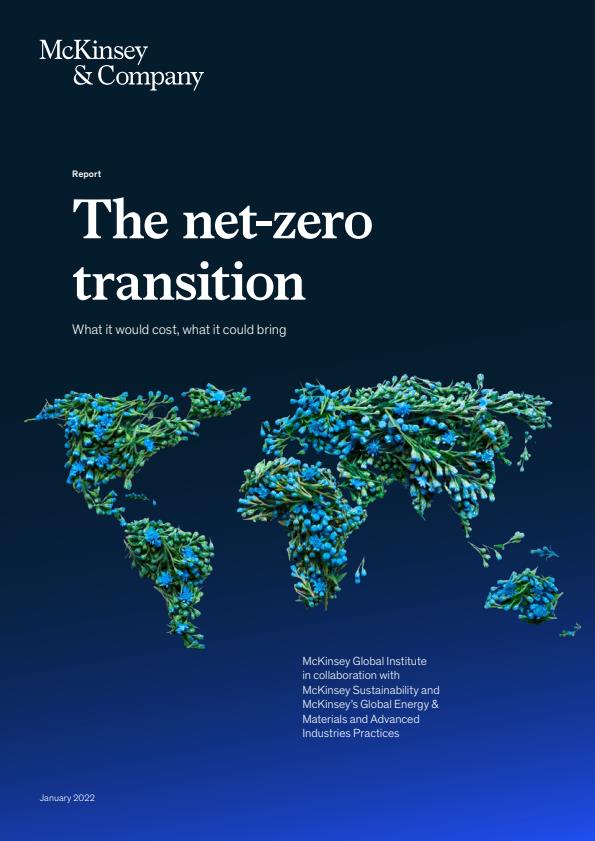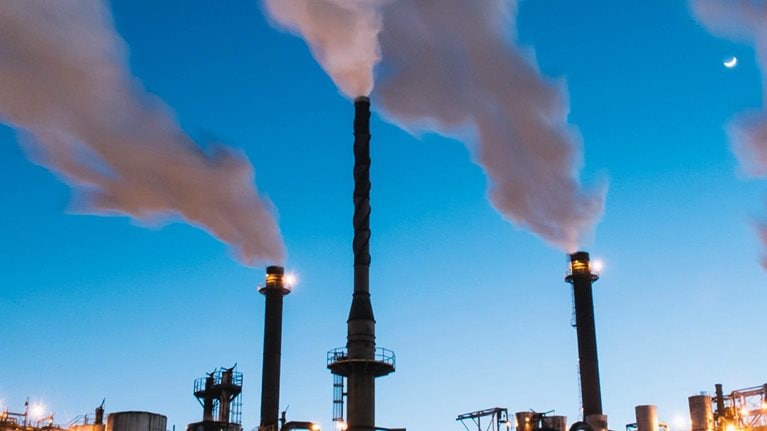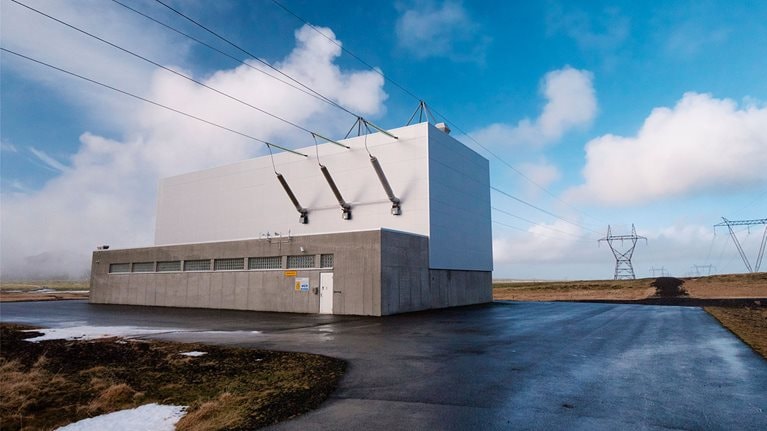Global decarbonization will be possible only if nine system-level requirements are met, encompassing physical building blocks, economic and societal adjustments, and governance, institutions, and commitment. Here, we illustrate the economic and societal adjustments by examining the economic transformation that would enable a successful transition to net-zero emissions by 2050. We look at the shifts in the economy in aggregate, on energy and land-use systems and the sectors that they encompass, and on individuals, both consumers and workers. Our focus is on the nature and magnitude of the transition in four areas: demand, capital allocation, costs, and jobs.
Our analysis uses the Net Zero 2050 scenario from the Network for Greening the Financial System (NGFS). This is a hypothetical simulation, not a projection or a prediction. Our perspectives on demand, investment, costs, and jobs below represent a consistent and interdependent view of the world under this scenario. The analysis is not exhaustive, and we acknowledge its limitations and uncertainties (see sidebar, “Our research methodology: Sources, scenarios, limitations, and uncertainties”).
Even under the relatively orderly scenario considered here, the economic transformation will be universal, substantial, and often front-loaded, with sectors, geographies and communities, and individuals facing uneven exposure. Among the challenges is the risk of short-term disorderly transitions in energy markets, and in the economy more broadly, if the ramp-down of high-emissions activities is not carefully managed in parallel with the ramp-up of low-emissions ones. A disorderly transition could come with high economic costs as well as a backlash that delays the transition. For all its short-term risks, the transition will also create rich new opportunities across sectors and geographies, for example in the form of new markets for low-emissions products and support services.
More broadly, in considering the economic and societal adjustments necessary for achieving net-zero emissions, it is important not to lose sight of the bigger context: the longer-term risks from increased warming and the further build-up of physical climate risks.
Demand: In the net-zero scenario examined here, high-emissions products would see shrinking demand, while uptake of low-emissions products would create growth opportunities
Our analysis suggests that under the NGFS Net Zero 2050 scenario, changes in policies, technologies, and consumer and investor preferences would lead to considerable shifts in demand for various goods and services. By 2050, oil and gas production volumes would be 55 percent and 70 percent lower, respectively, than they are today. Coal production for energy use would nearly end by 2050.
Similarly, the transition would affect demand for products that use fossil fuels. Demand for internal combustion engine (ICE) cars would eventually cease as sales of battery-electric and fuel cell-electric cars increase from 5 percent of new-car sales in 2020 to virtually 100 percent by 2050.
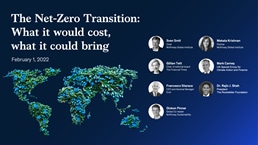
Watch the replay
Report authors and leading voices summarize this research and discuss what it would take to transition to net-zero
In other sectors, demand could shift, with a substitution of products manufactured with emissions-intensive operations to lower-emissions alternatives. For example, steel production would increase by about 10 percent relative to today, but with low-emissions steel rising from one-quarter of all production to almost all production by 2050. In the agriculture and food system, the dietary shifts necessary for a net-zero transition would, over time and in the case of some consumers, move protein demand from emissions-intensive beef and lamb to lower-emissions foods like poultry.
In other areas, in particular those related to low-emissions energy sources, demand would grow. Power demand in 2050 would be more than double what it is today. Production of hydrogen and biofuels would both increase more than tenfold between 2021 and 2050. Other industries, for example those that manage carbon with carbon capture and storage technologies, could also grow.
Capital allocation: About $275 trillion of cumulative spending on physical assets would be needed over the next three decades under the NGFS Net Zero 2050 scenario
Shifts in demand during the net-zero transition would trigger the retirement or transformation of some existing physical assets and the acquisition of new ones. Our analysis suggests that these moves would influence spending on physical assets in two ways. First, spending would increase significantly relative to today. Second, a portion of the capital that is now being spent on high-emissions assets would be spent on low-emissions assets, including those with CCS installed.
Our analysis of the NGFS Net Zero 2050 scenario suggests that about $275 trillion in cumulative spending on physical assets, or approximately $9.2 trillion per year, would be needed between 2021 and 2050 across the sectors that we studied (Exhibit 1).

This represents spending related specifically to the deployment of new physical assets and to the decarbonization of existing assets. It does not include spending to support adjustments—for example, to reskill and redeploy workers, compensate for stranded assets, or account for the loss of value pools in specific parts of the economy. Spending could also be higher than sized here in order to build redundancy into energy systems during the transition to avoid supply volatility. Other research to date has largely focused on estimating required energy investment. Here we expand this to include additional spending categories such as assets that use energy (for example, the full cost of passenger cars and heat pumps), capital expenditures in agriculture and forestry, and some continued spend in high-emissions physical assets like fossil fuel–based vehicles and power assets. As a result, our estimates exceed to a meaningful degree the $3 trillion to $4.5 trillion of annual spending for the net-zero transition that others have estimated.
The amount is equivalent to about 7.5 percent of GDP from 2021 to 2050. The required spending would be front-loaded, rising from about 6.8 percent of GDP today to about 9 percent of GDP between 2026 and 2030 before falling. In dollar terms, the increase in annual spending is about $3.5 trillion per year, or 60 percent, more than is being spent today, all of which would be spent in the future on low-emissions assets. This incremental spending would be worth about 2.8 percent of global GDP between 2020 and 2050. The increase is approximately equivalent, in 2020, to half of global corporate profits, one-quarter of total tax revenue, 15 percent of gross fixed capital formation, and 7 percent of household spending.

Our estimates exceed to a meaningful degree the $3 trillion to $4.5 trillion of annual spending for the net-zero transition that others have estimated.
The second aspect, the reallocation of spending, would also be significant. At present, $3.7 trillion—or 65 percent of total spending—goes annually toward high-emissions assets, such as coal-fired power plants and vehicles with internal combustion engines. In this net-zero scenario, about $1 trillion of today’s spend on high-emissions assets would need to be reallocated to low-emissions assets. Of the overall $9.2 trillion needed annually for a net-zero transition over the next 30 years, $6.5 trillion—or 70 percent of total spending—would be on low-emissions assets, reversing today’s trend.
Three sector groups—mobility, power, and buildings—would account for approximately 75 percent of the total spending on physical assets in this net-zero scenario.
If we consider the likely evolution of this spending given population growth, GDP growth, and current momentum toward the net-zero transition, the capital outlay would be smaller but remain significant. If we take as a basis the NGFS Current Policies scenario—which accounts for expected income and population growth as well as for currently legislated policies and expected cost reductions in key low-emissions technologies—the incremental annual spend in a net-zero scenario would be about $0.9 trillion rather than the $3.5 trillion increase noted above (Exhibit 2). Approximately 50 percent of the $8.3 trillion in annual spending in the Current Policies scenario would be on low-emissions assets, which highlights that already some shift to low-emissions spending is anticipated in this scenario from existing technological trends and policies today.

The transition could also lead to asset stranding, whereby existing physical assets are either underutilized or retired before the end of their useful life. In the context of the net-zero transition, the capital stock associated with fossil fuels and emissions is worth many trillions of dollars, a significant share of the total global capital stock—and even more capital stock depends indirectly on these assets.
Stranding large portions of this capital stock in a disorderly or abrupt way could impede value generation in many industrial sectors, and indeed the global economy, and would need to be carefully managed. In power alone, for example, we estimate that some $2.1 trillion worth of assets could be stranded by 2050. About 80 percent of these stranded assets would pertain to fossil fuel–based power plants in operation today, primarily coal-fired plants in countries such as China and India that are relatively new (less than 15 years old) and would normally have many more years of productive life.
Moreover, many assets that could be stranded are capitalized on the balance sheets of listed companies. Early retirement of these assets would potentially lead to the reduction of (currently perceived) value and to bankruptcies and credit defaults, with potential knock-on effects on the global financial system. And markets may well pronounce their verdict before the actual stranding has taken place. Unsurprisingly, then, the possibility of asset stranding has prompted concerns about financial-sector risk and the need to build the capabilities to quantify and manage it.
While the scale of the capital that would need to be deployed in a net-zero transition is substantial, it is important to put it in context. First and foremost, as we discuss later, the economic adjustments involved in reaching net zero in a coordinated and orderly manner would prevent the further buildup of physical risks and the additional costs arising from a more disorderly transition. Second, in the long run, the up-front capital expenditures for a net-zero transition could result in operating savings for some sectors through reduced fuel consumption, improved material and energy efficiency, and lower maintenance costs. It is important to recognize that capital spending is not merely a cost. Much of this investment is already cost-effective and comes with a return.
The up-front capital expenditures for a net-zero transition could result in operating savings for some sectors in the long run.

Costs: Sectors including steel, cement, and power would see cost increases in this scenario, while cost of ownership of EVs would fall
The transition’s financial implications reach beyond spending on physical assets. Production costs, which reflect changing operating costs as well as capital costs for new investment and asset depreciation, would also shift as processes are changed and high-emissions assets are replaced or retrofitted. And any changes in production costs could affect the costs of consumer goods if costs are passed through. We examine these effects in turn.
In the steel and cement sectors, production costs would rise by about 30 and 45 percent, respectively, from their current levels. In the power sector, our analysis indicates that the global average delivered cost of electricity across generation, transmission, distribution, and storage would increase before falling from its peak, in the scenario modeled here. The impact would be front-loaded: costs, including operating costs, capital costs, and depreciation of new and existing assets, would increase by about 25 percent by 2040 from 2020 levels (Exhibit 3). This is for two main reasons: first, investment will be needed in building renewables and grid and storage capacity, creating capital costs and depreciation charges. Second, some fossil fuel–based power assets would continue to incur capital costs, even if they are underutilized or retired prematurely.

In the scenario modeled here, costs would subsequently decrease from the 2040 peak; for example, by 2050, operating costs for generation could drop by more than 60 percent relative to 2020 as the energy mix shifts to renewables. Some of the reduction in operating and other costs for generation would be offset by an increase in the operating and other costs associated with grid flexibility, transmission, and distribution. As a result, delivered cost of electricity in this scenario would still be about 20 percent higher in 2050 than 2020 levels. In the long run, there is more uncertainty about how delivered cost of electricity could evolve, and costs could at some point be lower than 2020 levels, depending on innovations to power technologies, grid design, and evolution of the power system to manage flexibility issues.
Other sectors could see overall cost decreases. Our analysis suggests that the total cost of ownership for electric cars could be cheaper than for ICE vehicles in most regions by 2025, and even sooner in some regions.
Consumers would face up-front capital costs and may need to spend more in the near term on electricity if cost increases are passed through
The net-zero transition could also affect consumer spending. Consumers may face higher prices and up-front capital costs in the near term and may need to adjust their spending patterns if significant emissions reductions are to be achieved, although the extent of the impact could vary depending on the composition of consumers’ spending baskets and whether companies pass on costs, among other factors. Low-income households are particularly at risk.
First, consumers’ spending habits may be affected by decarbonization efforts, including the need to replace goods that burn fossil fuels, like transportation vehicles and home heating systems that rely on fossil fuels, and potentially modify diets to reduce beef and lamb consumption.
Second, any rise in electricity prices would affect consumers, particularly lower-income consumers, whose spend on energy makes up a large share of wallet. However, this depends on how cost recovery is allocated among consumers, up to and including the extent any increases in delivered cost of electricity are passed through to end consumers.
Third, consumers will incur up-front capital costs related in particular to the mobility and buildings transition. For example, as ICE vehicles are phased out, households would shift spending to EVs, which cost more than comparable ICE cars because of their large batteries. Even though in the long term, consumers would benefit over the life of the asset—for example, because of the lower total cost of ownership for EVs or savings from energy efficiency—up-front capital spending may be challenging, especially for lower-income households. McKinsey analysis suggests that the total cost to own an EV, which takes into account purchase price, maintenance, fuel cost, and resale value, would reach parity with the figure for an ICE car by 2025, or even sooner in most regions, assuming battery costs fall as expected. For example, the total cost of ownership for electric cars in Europe may be cheaper compared to that of ICE vehicles by 2022, and the United States by 2027. A faster decline in battery prices or local subsidies could accelerate this break-even point. Food costs are one area where consumer costs could fall if the dietary shifts required to decarbonize the agriculture and food sectors manifest—that is, if eating habits move away from emissions-intensive and higher-cost ruminant protein like beef and lamb to other forms of protein like poultry.
Finally, higher production costs could also affect the price of consumer goods and services in other areas. Higher costs for low-emissions shipping could be passed on to the consumer for goods shipped internationally; however, the extent to which this will flow through to higher costs for consumers will likely be country- and product-specific. Likewise, rising costs in hard-to-abate sectors such as steel and cement could raise the cost of end products, though this effect will depend on the fraction of the cost of these materials in final goods and services. All of these could be addressed through a range of compensating mechanisms to ease the transition.
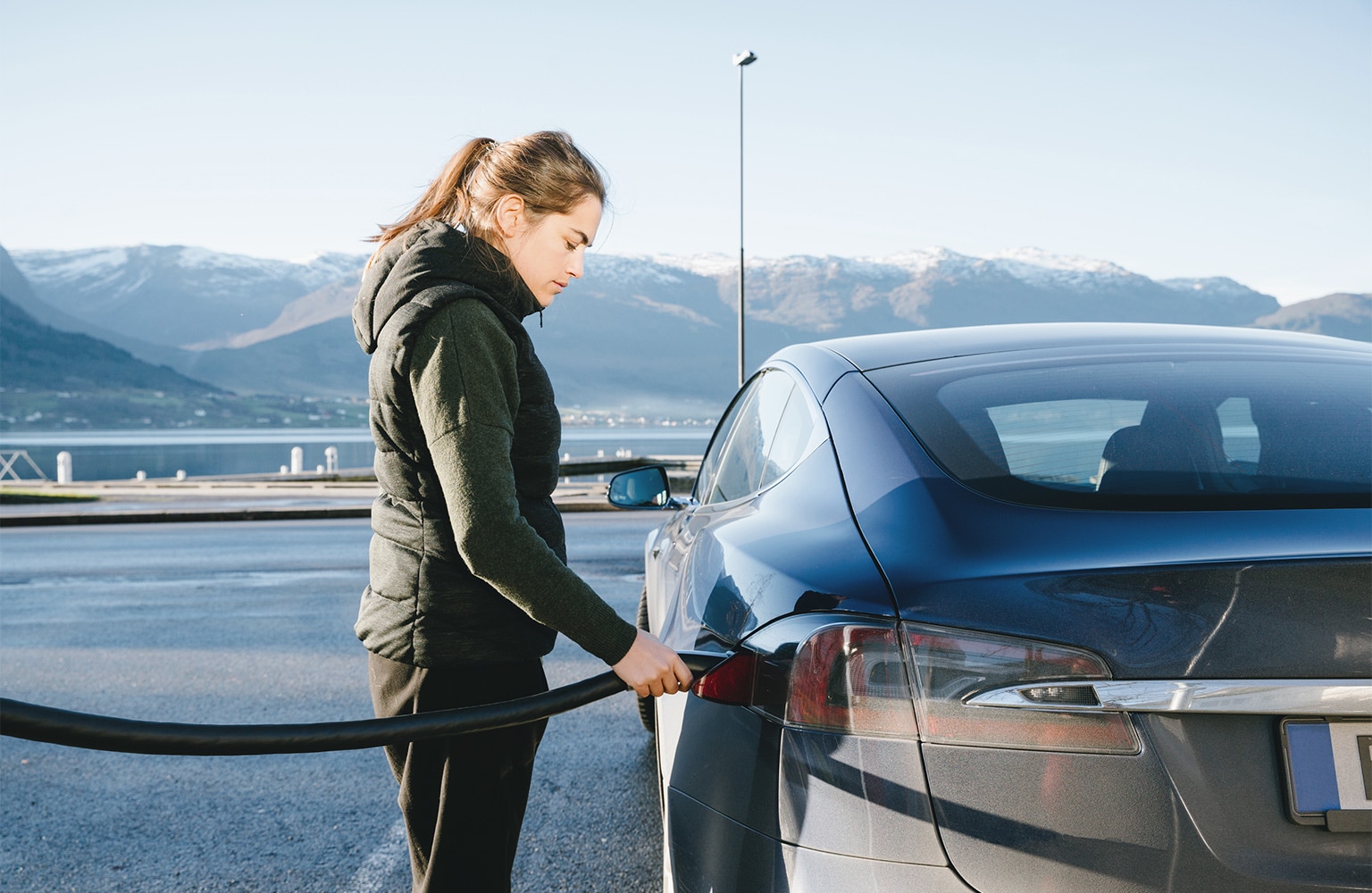
The total cost of ownership for electric cars may be cheaper than internal combustion engine cars by 2022 in Europe and by 2027 in the United States.
Jobs: The net-zero transition analyzed here could lead to a reallocation of labor, with about 200 million direct and indirect jobs gained and 185 million lost by 2050
Our analysis of the NGFS Net Zero 2050 scenario suggests that the transition could result in an increase in demand for about 162 million jobs (referred to below as “job gains”) and a decrease in demand for about 152 million direct and indirect jobs (“job losses”) in operations and maintenance by 2050 across different sectors of the economy (see sidebar, “Our methodology for estimating employment effects in the net-zero transition”). In addition, about 41 million jobs could be gained and 35 million lost related to direct and indirect jobs associated with spending on physical assets needed for the net-zero transition by 2050. Jobs in the latter category, linked to shifts in capital spending, are likely to be more transitory than those in the former, related to operations and maintenance, as discussed below. Together, this results in 202 million direct and indirect jobs gained and 187 million lost by 2050, as a result of the net-zero transition modeled here (Exhibit 4). The effect on jobs would be especially notable not so much for its overall size in terms of net losses or gains as for its concentrated, uneven, and reallocative nature.

The size of the job dislocation in the scenario analyzed here needs to be put in perspective with job dislocations from other trends. For example, previous research by the McKinsey Global Institute suggests that automation, remote work, and e-commerce trends could lead to job losses of about 270 million to 340 million across eight countries between 2018 and 2030, with commensurate job gains—considerably more than our estimates for net-zero transition-related job losses and gains globally.
One notable characteristic in our analysis of the job losses and gains during the net-zero transition would be their concentration in specific sectors and geographic regions. Job gains would be largely associated with the transition to low-emissions forms of production, for example to renewable-power production, while the losses particularly affect workers in fossil fuel-intensive or other emissions-intensive sectors, a significant reallocation of jobs across the economy. In the NGFS Net Zero 2050 scenario, demand for direct operations and maintenance jobs in the fossil fuel extraction and production sector and the fossil fuel–based power sector could be lower by about nine million and about four million jobs, respectively. That is the equivalent of about 70 percent and 60 percent of today’s workforce in these sectors. Jobs in the agriculture and food sectors could also be reallocated as demand for animal protein is affected under a net-zero transition. About 34 million direct jobs, mainly in livestock and feed-related jobs, could be lost by 2050, including 19 million in ruminant meat farming. These could be partially offset by a gain of 12 million direct jobs, including for example ten million in poultry farming.
Low-emissions sectors, by contrast, would likely see job gains. For example, the renewable-power sector could see an increase in demand for approximately six million direct operations and maintenance jobs by 2050 driven by the net-zero transition.
One notable characteristic in our analysis of the job losses and gains during the net-zero transition would be their concentration in specific sectors and geographic regions.
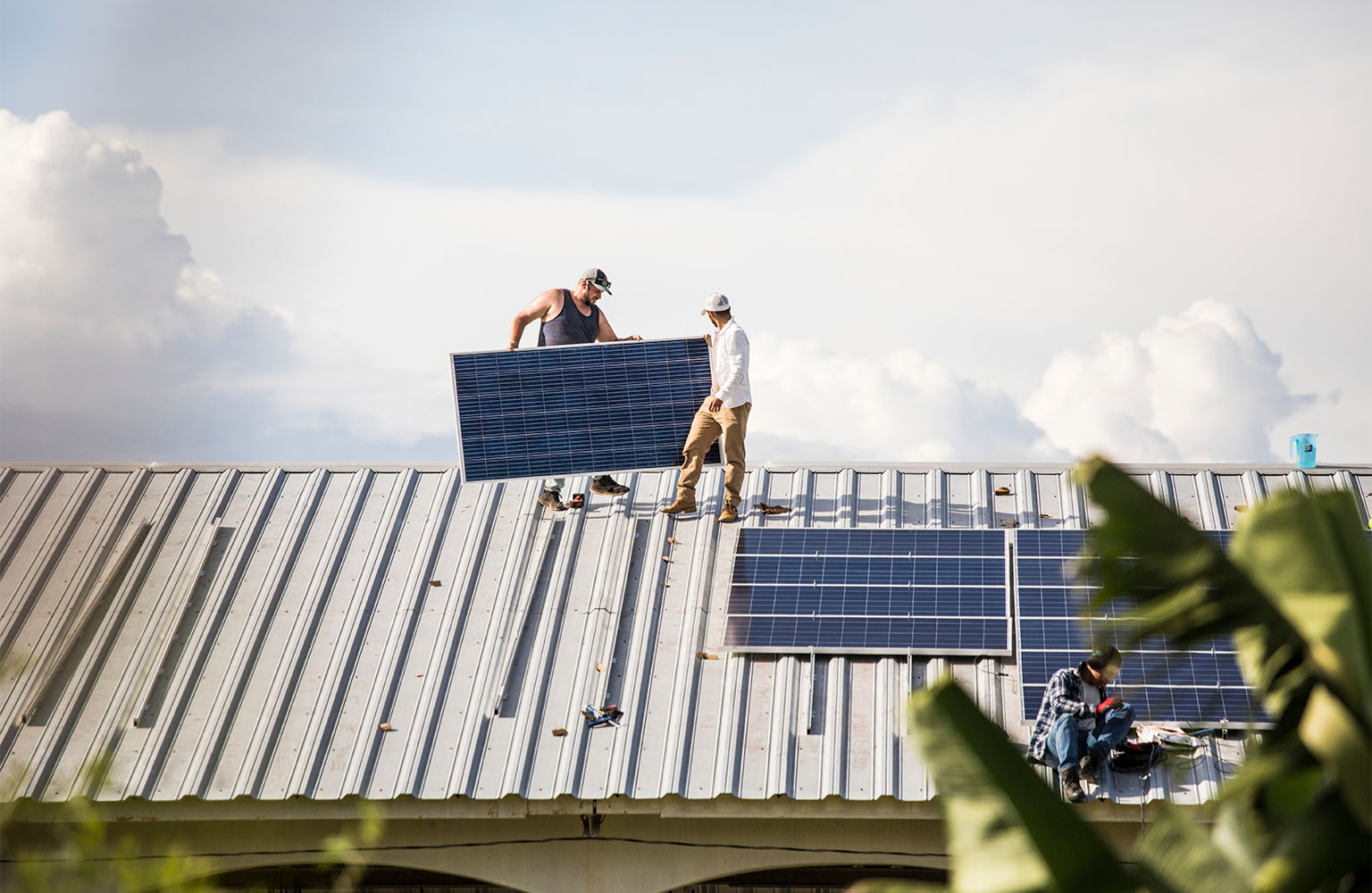
Disruptions would be substantially greater under a more disorderly transition
How the transition is managed will be decisive. The effects described here reflect the NGFS Net Zero 2050 scenario, in which gradual yet substantial reductions in emissions take place, resulting in a relatively orderly transition. However, the complexity of the transformation may well lead to the reality being more disorderly, and indeed it may not be feasible to limit warming levels to 1.5°C. This makes the case for action even more critical.
The key risks are threefold: the first concerns the choice of pathway to arrive at net-zero emissions, and whether this will be smooth or abrupt. The second relates to the measures taken by stakeholders to ease the adjustments needed for a net-zero transition. The third has to do with a range of constraints that could prove challenging even if the pathway chosen is a relatively smooth and gradual one.
Some pathways to net-zero emissions assume that the decline in emissions begins immediately and progresses gradually to 2050, with appropriate measures in place to manage disruptions and limit costs. Others assume that reduction of emissions begins later and progresses more quickly to achieve the same goal. The latter could involve significant and abrupt changes in policy, high carbon prices, and sudden changes to investment practices—along with greater socioeconomic effects and a larger-scale response. Making job transitions would be more challenging, and there could be greater risk of stranded assets.
Second, if actions are not taken to manage transition disruptions, this could lead to more challenges, especially for vulnerable communities. For example, challenges could result if any increases in energy costs are passed through to low-income households or if displaced workers are not provided appropriate support to reskill and redeploy.
Finally, even if the pathway chosen is relatively orderly, given the scale of the transformation required, supply may not be able to scale up sufficiently, making supply and demand imbalances, shortages, and price increases or volatility a feature. Rapidly scaling up demand for low-emissions assets and other products needed for the transition without corresponding scale-up of supply could lead to supply shortages, price increases, and inflation. As already noted, a mismatch or mistiming between the ramping down of high-emissions activities and the ramping up of low-emissions activities could create energy price volatility and issues with reliability that may result in a backlash that delays the transition. Conversely, the risk exists that stakeholders maintain two parallel energy systems in a manner that is inefficient and not cost-effective. Thus the transformation of the energy system needs to be carefully managed. And there may be other constraints, including accessing the volume of financing required in the initial phases of the transition when many of the investments would be front-loaded.
There could also be other costs incurred and investment needed beyond those mentioned in this report, for example related to the reskilling of workers or to economic diversification efforts. A key area where additional spend would be needed is related to adaptation investments. Adaptation action is needed to manage a continually increasing level of physical risk, irrespective of the decarbonization measures required to achieve net-zero emissions. Key adaptation measures include actions to protect people and assets, for example installing gray infrastructure such as seawalls, building resilience and backups in systems with actions like increasing global inventories and diversifying supply chains, and reducing exposure where necessary, for example by relocating assets from regions.
To illustrate the difference between transition pathways, we analyzed two NGFS scenarios consistent with limiting warming to less than 2.0°C from preindustrial levels. In the Below 2°C scenario, where emissions reductions start immediately on a pathway to 2.0°C of warming, our analysis suggests that only a relatively small amount of additional coal power capacity is added, amounting to about $150 billion between 2020 and 2050. Of this, $100 billion would be prematurely retired or underutilized. But in the scenario where emissions reductions toward 2.0°C warming start later, a substantially larger amount of capacity would be added; as much as $600 billion would be invested in coal-power capacity, with as much as $400 billion prematurely retired or underutilized.
Perhaps the greatest risk from delaying emissions reductions is physical climate risk. The longer initiating emissions reduction takes, the more of the world’s remaining carbon budget would be used up, leaving less time to cut emissions and increasing the risk that warming is not restricted to 1.5°C or even 2.0°C.

Rapidly scaling up demand for low-emissions assets and other products needed for the transition, without corresponding scale-up of supply, could lead to supply shortages and price increases.
While significant, these economic adjustments would create growth opportunities and prevent further buildup of physical risk
The changing demand outlook combined with the $3.5 trillion in incremental annual spending on physical assets in the NGFS Net Zero 2050 scenario, noted above, would create substantial growth opportunities for companies and countries in the near term. The opportunities for companies are in the three main areas described below (for more on the opportunities for countries, see “How the net-zero transition would play out in countries and regions.”
Decarbonized forms of legacy products and processes: Companies that reduce the emissions intensity of their processes and products could gain advantages as the transition progresses. In some cases, decarbonizing processes and products can make them more cost-effective. For example, improving the energy efficiency of heating systems in steel plants lowers both emissions and operating costs. Even when decarbonizing adds to operating costs, companies can benefit from taking this step—for instance, if consumers are willing to pay more for low-carbon products or if companies are subject to carbon-pricing mandates.
Low-emissions products and processes that replace established high-emissions options: Carmakers might produce EVs instead of ICE vehicles, for example. Steelmakers can implement low-carbon production processes such as direct reduced iron–electric arc furnaces powered by green hydrogen. Utilities might set up wind or solar farms to generate renewable electricity, while energy companies could introduce biofuels and hydrogen.
Inputs, physical capital, infrastructure, and support services: New offerings will be needed to support production in the other two categories. These offerings include inputs such as lithium and cobalt for battery manufacturing, physical capital such as solar panels and batteries, and infrastructure such as EV charging stations and hydrogen refueling stations. Technical services such as forest management, engineering and design, and power-system integration will help with the management of low-carbon assets. Services such as financing, risk management, certification, emissions measurement and tracking solutions, and worker training will also be needed.
The incremental capital spending on physical assets, which we estimate at about 3 percent of GDP annually through 2050, and the broader economic transformations under a net-zero transition would have another essential feature: reaching net-zero emissions and limited warming to 1.5C would prevent the buildup of physical risks and reduce the odds of initiating the most catastrophic impacts of climate change, including limiting the risk of biotic feedback loops and preserving the ability to halt additional warming.
